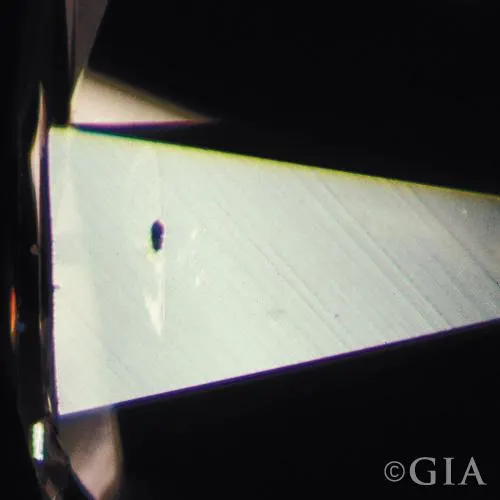Diamond Blemishes: Polish Lines | Rare Carat

Buying a diamond can be hella confusing. What is a cavity? What is a pinpoint? What is a bruise? Here at Rare Carat we strive to provide you with the answers to all of these question, and hopefully make you smile while doing so. The smile might be one of admiration or one of pity – and really, we don’t care which as long as we are making this whole diamond buying malarkey just a little bit simpler and a lot more fun.
Now, if you didn’t have a clue what a cavity/pinpoint/bruise was, then you better get educated my friend. A great way to start is to begin with our cute little introduction to the world of diamond imperfections. If you click here you will find a wealth of info on the difference between an inclusion and a blemish, where to spot them on a diamond grading certificate and why the hell any of that matters in the first place. Do yourself a solid and have a little read of that, you won’t be sorry. You will also find so many posts back on our blog page about every diamond inclusion and blemish you are likely to come across, so sift through those at your leisure. Or never. Whatever suits, really.
Suits. What a great show. I wonder how they will write Meghan Markle out of the show now that she’s going to be a bad-ass beautiful royal princess? We can only wonder. Right, back to diamonds.
What are diamond polish Lines? Now I could fill you with all manner of funny yet inaccurate information here (and I’m seriously tempted) but as I am a consummate professional then I’ll stick with the facts. Polish lines are simply ridges or grooves left after polishing a diamond. Clue’s right there in the name if you think about it. These tiny little lines and ridges left behind by the polishing wheel are most often white or transparent, and look kinda like this:

The lines themselves are similar to the type of streaks you might get when cleaning a window, and are the result of a sloppy polishing job (#TruthSpeak). As with ‘lizard skin’ that we touched on before (still sounds funny), polish lines can occur if the diamond is polished in the wrong way (i.e. ‘against’ the grain of the stone) or under the wrong conditions (too damn fast and without much TLC). These lines are not necessarily a deal breaker however, as they can be removed fairly easily! All that needs to be done is to give the diamond a quick polish-up (not by you silly, a professional diamond cutter) and the lines will be gone like Keyser Söze. This will be an added cost to you however, so if they sit on the underbelly of the diamond (A.K.A. the pavilion) or are extremely difficult for you to spot even under 10x magnification, we suggest that you leave well enough alone and hope that the diamond polisher did a better job on the next stone he worked on.
If you’re worried about polish lines on you diamond (for instance if you’ve seen them labeled on the diamond grading report) and would like some advice, why not ask us for help? Our gem nerds are always ready to help you find that perfect sparkler. It’s basically what we live for. That, and Suits. #Meghan4Eva


Polish Line Diamond Blemishes FAQs